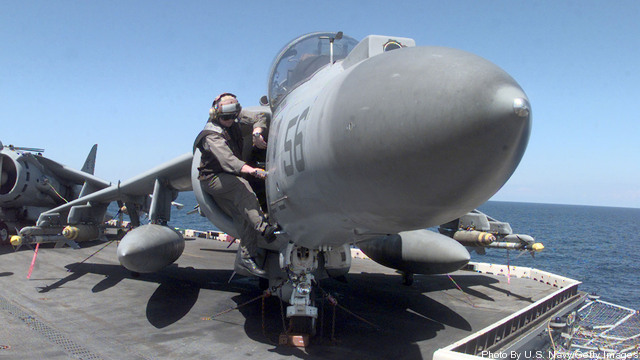Marines Struggle To Balance Readiness, Missions
Posted on

Cherry Point, N.C. — After a decade of continuous combat in Afghanistan and with budget cuts looming, the Marine Corps worry whether its air units can meet their missions at home and abroad.
But one wing commander tells me that his unit and others will be able to fill that bill now and for years to come.
Davis told Assistant Commandant for the Marine Corps Gen. Joseph Dunford just that when the four-star came here to 2nd MAW, to see for himself how ready the wing really was.
“We [were] trying to get at that for Gen. Dunford, to make sure we articulate exactly” where the wing is, and what they may need, to hit the force readiness goals for the unit, Maj. Gen. Jon Davis, commander of the 2nd MAW, told me last week.
“I think there was some question mark as far as what we could do,” he added.
But Davis maintains that his unit, as well as others across the Marine Corps, can still do everything asked of them, in spite of those pressures. Emphasizing his point, the two-star wing commander gave me a brief rundown of what the 2nd MAW had been up to over the past few months.
On the day of my visit, members of the 2nd MAW were flying their F-18 fighters as part of a three-day close air support training exercise, where Marine Corps pilots practice reloading and refueling their planes in battlefield conditions.
This exercise came only a few weeks after the unit completed its “Mailed Fist” exercise, which included Marine Corps fighter wings from Virginia, North Carolina and Florida. It was the largest training maneuver in recent history for the 2nd MAW, according to Davis.
Just two months before, those same Hornets were flying combat sorties above southern Afghanistan.
While that kind of operational tempo cannot be kept up indefinitely, Davis the 2nd MAW’s ability to pull them off now is proof positive that his and other Marine Corps air units, would keep their end up.
Questions regarding overall Marine Corps readiness were front and center in July, when the four service vice chiefs told lawmakers that America’s fighting forces were nearing the breaking point, due to commitments in Afghanistan.
For his part, Dunford told members of the House Armed Services Readiness subcommittee that there were not enough Marines stations stateside to do critical training and support missions.
But Davis thinks the Marines can cope. The service issued a new force restructuring strategy earlier this year based on a smaller, more mobile force designed to react quickly to any situation. The plan restructures Marine Corps missions and responsibilities and shows where the service will put its limited resources in the future.
That plan clearly sets in stone how the Marine Corps will operate as that leaner, meaner and more agile force once the war in Afghanistan is over.
“Folks have not really focused on what the post-Afghanistan [force] will look like, so the Marines have,” Davis said. “You want to be able to take that [capabilities] kit . . . and creatively where you put it, globally.”
While noting the Marines do face a “significant transition challenge” in getting that plan into practice, units like the 2nd MAW are doing just that in their day-to-day operations, Davis said.
From F-18 squadrons stationed in the Pacific flying long-range patrols to providing support for counterinsurgency operations in southwestern Afghanistan, Marine Corps air units have been able to handle all types of operations “from the low to the high end”, Davis said.
“I’d say you are looking at the future [happening] real-time,” he added.
Subscribe to our newsletter
Promotions, new products and sales. Directly to your inbox.
